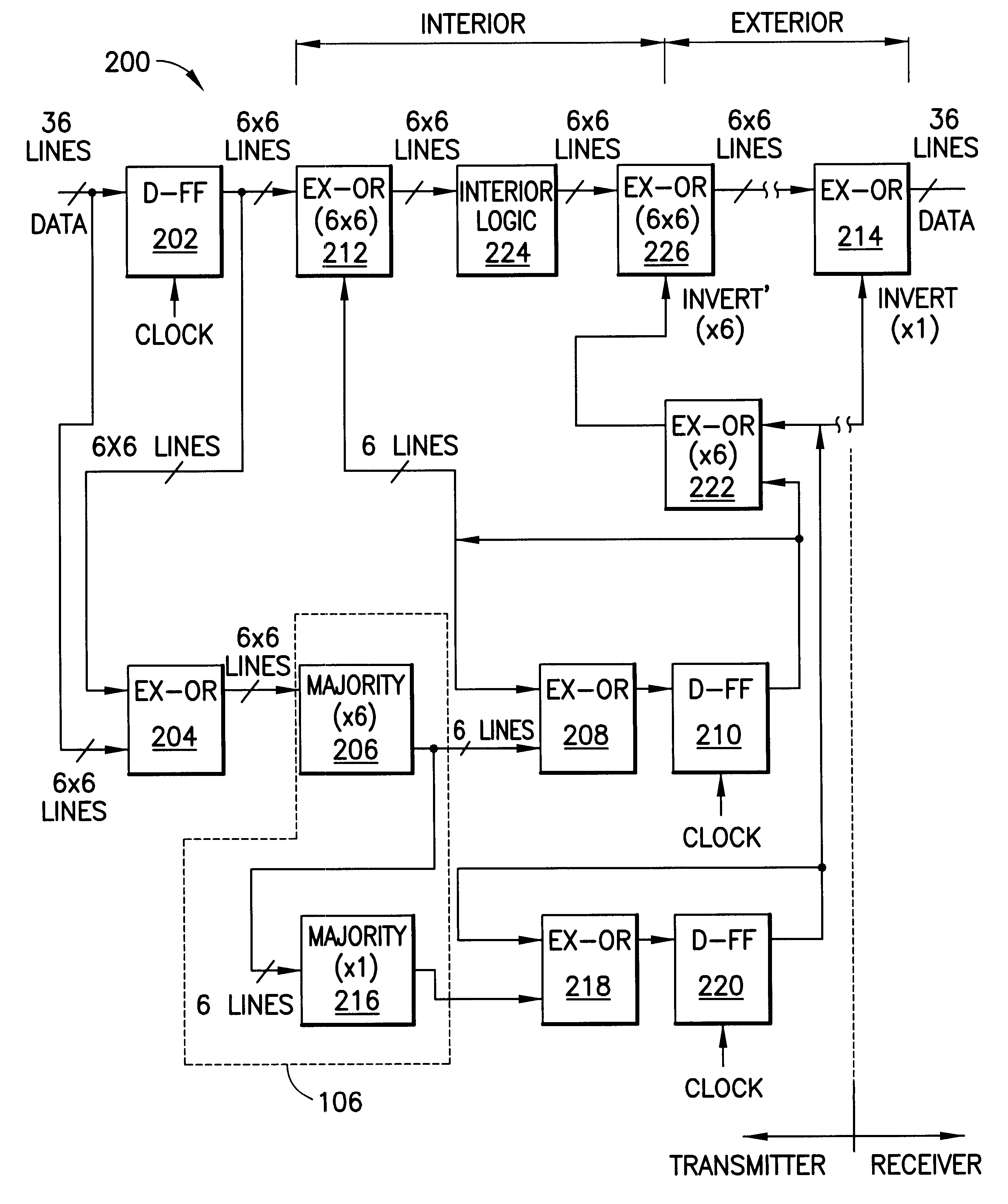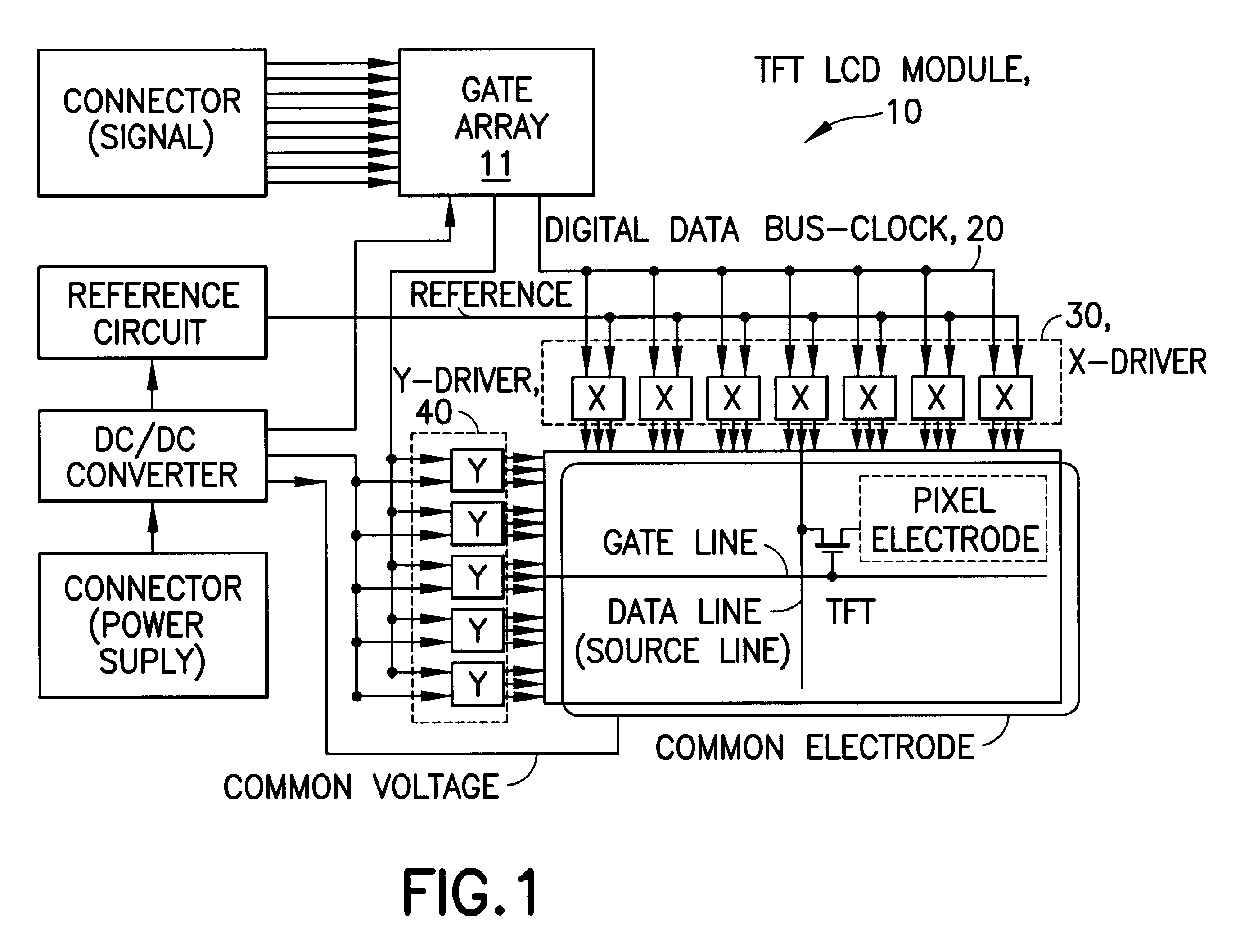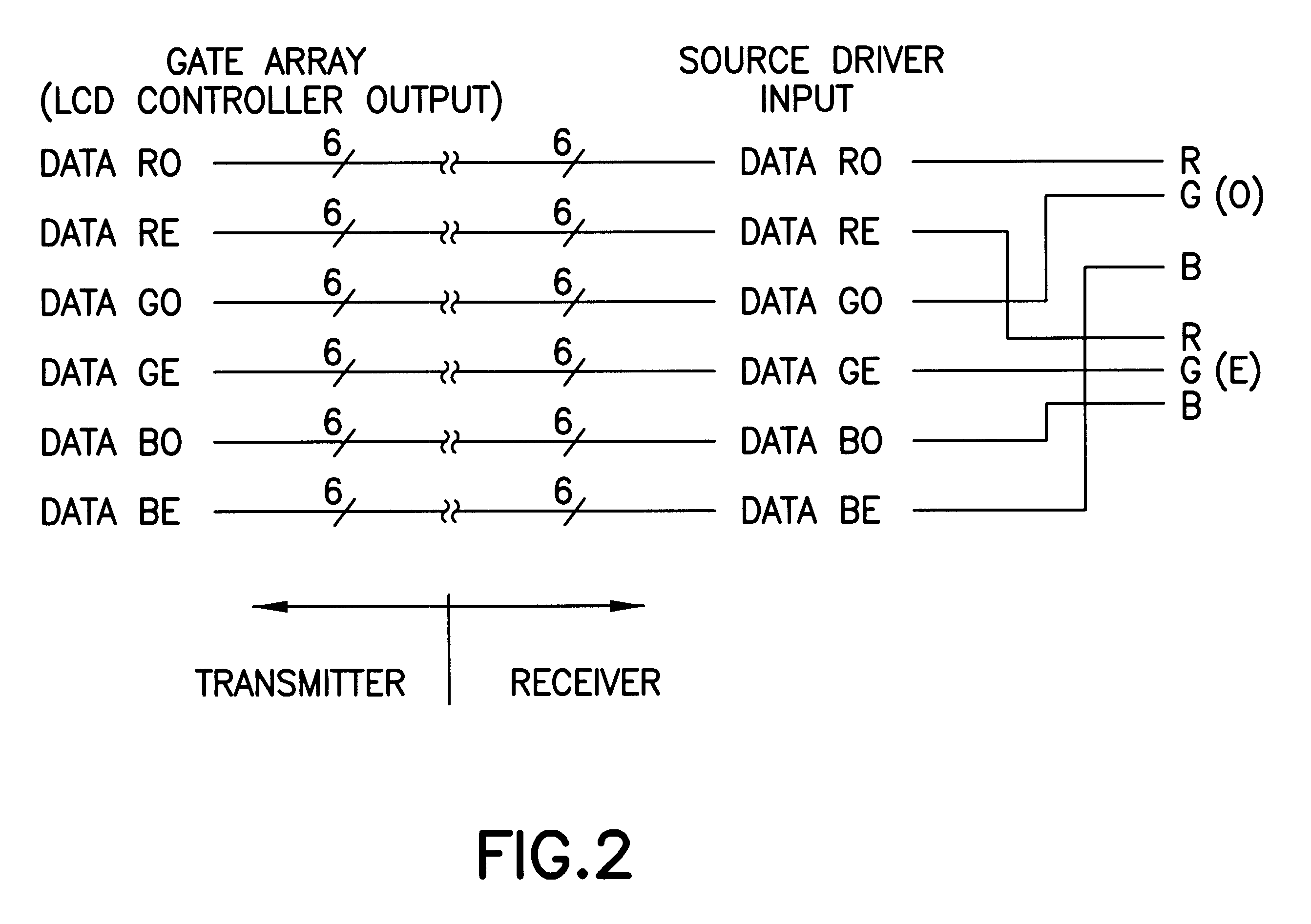Data-transferring method and apparatus for reducing the number of data-bit changes
a data-bit change and data-transferring technology, applied in computing, instruments, climate sustainability, etc., can solve the problems of emi radiation often becoming a problem, unnecessary radiation of electro-magnetic waves, and obstacles to unnecessary radiation
- Summary
- Abstract
- Description
- Claims
- Application Information
AI Technical Summary
Problems solved by technology
Method used
Image
Examples
Embodiment Construction
An embodiment of the present invention will be described with reference to the data leading from the LCD controller in the interior of an LCD display to the source driver, i.e., image data, which will particularly become a problem because of a large number of data lines.
FIG. 2 illustrates the minimum repetitive unit of data prepared for being input from outputs of a gate array 11 (or an LCD controller) to an X-driver 30 (data driver or source driver) through digital data buses.
Referring again to FIG. 1, signals are transferred onto data lines from the gate array 10 to the X-driver (also called a data driver or a source driver) 30 and the Y-driver (also called a gate driver) 40 through the digital data bus-clock 20. For this reason, the portion of the digital data bus-clock 20, which are provided over a relatively long distance, becomes a problem.
In order to discriminate a portion having such a problem and a portion having no such a problem from each other, an "internal" portion is i...
PUM
 Login to View More
Login to View More Abstract
Description
Claims
Application Information
 Login to View More
Login to View More - R&D
- Intellectual Property
- Life Sciences
- Materials
- Tech Scout
- Unparalleled Data Quality
- Higher Quality Content
- 60% Fewer Hallucinations
Browse by: Latest US Patents, China's latest patents, Technical Efficacy Thesaurus, Application Domain, Technology Topic, Popular Technical Reports.
© 2025 PatSnap. All rights reserved.Legal|Privacy policy|Modern Slavery Act Transparency Statement|Sitemap|About US| Contact US: help@patsnap.com



